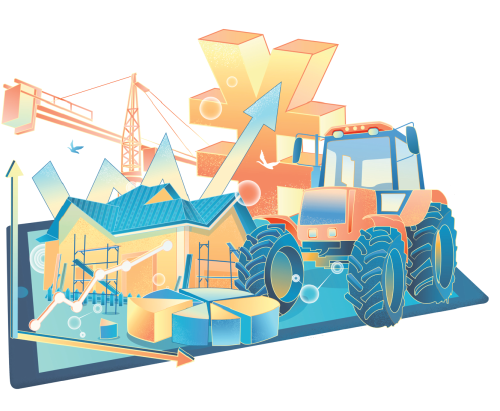
LI XIN/FOR CHINA DAILY
Eradicating poverty is high on the list of both the Millennium Development Goals and Sustainable Development Goals. Both the MDGs and SDGs were endorsed by the heads of state or government of the 190-plus member countries of the United Nations, including BRICS.
As a member of the UN as well as BRICS, China's contribution to global poverty reduction is much more than its contribution to global economic growth, which is estimated to be about 30 percent. So, since China's unprecedented economic growth has been called a "miracle", the fact that China is set to eliminate absolute poverty by the end of this year can be seen as "a dream come true".
There is no doubt that the fast economic growth in China and India has played a key role in reducing poverty in the two countries. Slower but positive growth-before the novel coronavirus pandemic broke out-also helped the other BRICS countries to lower their poverty rates. Indeed, economic growth helps reduce poverty, provided that income distribution remains the same or improves. But if income inequality worsens, the impact of positive growth can be offset, even reversed-meaning poverty will increase.
The relevance and significance of inequality can be understood by imagining a country with no inequality. In this hypothetical case, everyone gets the same share of the national income, and if long-term per capita income is higher than the poverty line, there will be no poverty.
The impacts of growth and inequality on poverty are interlinked and the growth-inequality-poverty relationship is complex. But it is still possible to assess their roles in making China's dream come true and to analyze how the other BRICS economies can reduce poverty. This can be done by attributing changes in the poverty rate to growth (the so-called growth impact) and changes in the inequality level (the distributional impact). Such an analysis is informative and useful, as it can help policymakers to rework or adjust their development strategies, and focus on either growth or distributional concerns, or both.
The results of such an analysis indicate that growth has played a much more important role than inequality in reducing poverty in all BRICS countries. Changes in income distribution either had negligible impact on the poverty rate or actually entailed increase in poverty.
In particular, rising inequality in China and India hampered the progress of poverty alleviation work. In other words, China and India could have achieved even better results had their income distribution not deteriorated over time.
Rising income gaps could also hurt growth and the poverty alleviation work, because they put psychological pressure on the poor-even compel some to engage in criminal activities out of desperation-and contribute to sluggish demand. For example, rising income inequality in China is a main cause of insufficient domestic demand that affects the profitability of enterprises. Having difficulty in selling their products and services, enterprises hold on to future investment, which hurts economic growth.
It is thus important for governments, including those in BRICS economies, to promote growth and at the same time contain, if not reduce, inequality. This will lead to inclusive growth, and ensure that sufficient attention is paid to the poor and vulnerable groups when designing and implementing various policies.
Especially, greater efforts should be made to ensure the poor do have equal access to education and healthcare services, because education and health represent the fundamental elements of human capital and are key determinants of people's well-being or poverty.
In short, all BRICS countries have made progress in poverty alleviation work, even though the progress has been uneven due to their different growth rates and the levels of inequality in their societies. But despite growth playing a dominant role in poverty reduction, it would be a mistake to overlook inequality, because a high level of inequality directly undermines growth potential and indirectly offsets the beneficial impact of growth on poverty reduction.
(The author, former director and head of Poverty and Inequality Group at the Asian Development Bank, is a distinguished professor at and director of the Institute of World Economy, Fudan University.)






